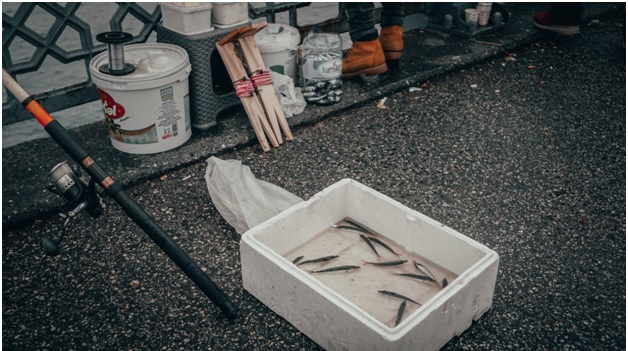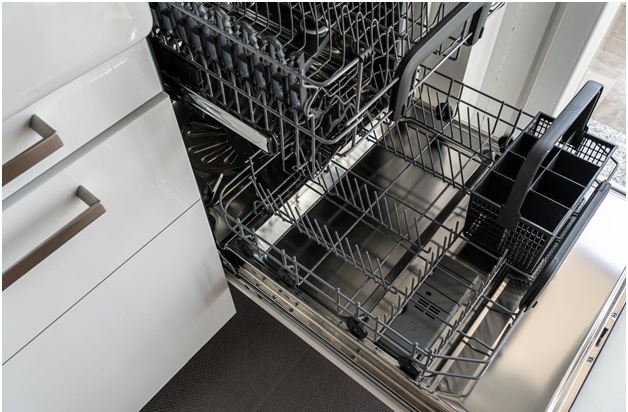7 Things You Should Never Do with Your Folding Pocket Knife
9th May 2022
For those of us that preach the EDC gospel, a folding pocket knife is a literal lifeline. When you start carrying one, you just can’t go back. Leaving home without your EDC folder makes you feel quite naked. It’s not a good feeling.
You know what else isn’t a good feeling? Abusing your folding pocket knife and having the blade snap or the lock fail. That happens, and it happens more than most of us care to admit. (Yes, it’s happened to the writer of this article on numerous occasions.)
And, since so many of us choose folding pocket knives for EDC tools simply because of their convenience, we need to be conscientious and realistic about it all.
The fixed-fanatics legitimately have a point when they sneer at us and say that “folders are pre-broken.” Well, they’re not wrong.
I wouldn’t trade my fixed blades or my folders out and I use them all, but folders just can’t do what fixed blades can.
So, here are some things we’ve learned the hard way about what you should never do with a folding pocket knife.
Use It As a Pry Bar
To be honest, this is really not something you should ever use any knife for, fixed or folding. Using a knife as a pry bar is a special ticket to the venue featuring “broken tips.”
Granted, some tips are broader and tougher than others, like sheepsfoot blades, tanto, reverse tanto blades, and cleaver style blades - but honestly, you shouldn’t even be prying with these.
However, with folding knives, not only can your tip break, but you have another point of failure - the lock.
Yes, you can break your lock, or warp it, using the knife as a pry bar, so honestly, don’t try. It’s just not worth it.
Use It As a Hammer
We’re not sure where the practice of “using a knife as a hammer” even came from, but boy is it a thing. Some knives, like the Buck Selkirk, are even built with a flat face on the pommel which can be used as a striking tool.
But here’s the thing: the Selkirk is fixed and can take that sort of thing. Folders, simply put, cannot.
Once again, if you use your folding pocket knife as a striking tool, you risk breaking the lock. You also risk breaking the blade, depending on how you strike with it. Also, it’s just not good knife acumen.
You should cut, not chop, unless the blade was designed for it, and to be honest, very few folders (if any) are. Chopping is for large fixed blades with thick, full tangs, not for folders.
Baton with It/Strike the Spine
Batoning is a hot-button topic among people that use tools and carry knives.
On the one hand, axes, hatchets, and mauls are literally designed for this and have wooden hafts that can absorb impulse better than the steel spines and tangs of knives.
On the other, fixed blades like bolos and machetes have been used as batoning and striking implements for hundreds if not thousands of years.
Here’s the catch. There are no folding blades that can take this type of abuse.
Hey there reader, writer speaking: I have personally broken several folders (good ones, too, the RAT II comes to mind) when attempting to baton through small wood rounds with them.
Do not try it. At best, you will deform or break the lock outright. At worst, you will snap the blade. There are just too many failure points on folding knives.
The bottom line: do not baton with a folding pocket knife. Just don’t.
Throw It
Most fixed blades should not be thrown, either, for a very specific reason. They’re tempered with a heat treatment that enables them to hold an edge longer.
The higher the edge retention (that is, the harder the steel) the more brittle the steel tends to be. Brittle steel snaps under impulse, and that’s exactly what throwing a knife will do to it. Many knife makers, like ESEE, specifically state this on their website.
Also, throwing knives are either made from softer steel or intentionally heat-treated to a lower hardness so that they can withstand the abuse of throwing.
Now, back to folding pocket knives. They’re often too brittle to throw as well, but again, there are other failure points: the lock and the pivot point. Both of these things can and will fail if you throw them.
Can you potentially throw a folding knife without breaking it? Yes. Will it eventually break? Also, 100% yes. Do not throw them.
Use It Around Saltwater, Then Not Rinse It

Those of you that enjoy boating along the coast or fishing in saltwater - you probably have a folding knife or two around deck, on you, or in your tackle box, right?
Good on you if you choose a folding pocket knife with a stainless steel blade alloy that you know to be resistant to corrosion, like 420HC or one of the 7Cr or 8Cr series. They’re much better at dealing with saltwater than, say, 1095 carbon steel or D2.
But, no matter what the alloy is, it’s going to rust if you don’t rinse, clean and dry the knife afterward.
Stainless steel’s a good start, but it’s not foolproof. If you use your everyday carry folder around saltwater, for heaven’s sake, clean and dry it after you do, every time.
Use Too Much Oil
Here’s another big problem that some users create for themselves - cleaning their folding pocket knives and then applying too much oil to the pivot point.
Do you need to clean out the liner space and the pivot screw area? Absolutely.. Should you use a little bit of oil to lubricate the pivot? Potentially, if it’s really needed. A little oil can be a good thing. It lubricates and protects against corrosion. Too much oil however, is not good.
A better idea is to use compressed air to blast out lint, sand, dirt, and other debris. That will keep your knife fluid without the need for liquid lubricants.
If you do apply oil, be as sparing as you can possibly be. Oil does lubricate the pivot and bearings, but it is also a sticky magnet for sand, mud, dust, and other detritus. Once that stuff clings to oil, you can’t get it out - and guess what, it’s abrasive.
So, if you must use oil at the pivot point, use as little as absolutely possible.
Put It in the Dishwasher
One more for good measure. Never put your knives in the dishwasher. Even your kitchen knives, honestly.
We know this may go against what you’ve been taught, but dishwashers are so bad for knives, you guys - so bad!
They use harsh cleaning detergents, and extremely hot water and even dry their contents under even more extreme heat.
All of that spells doom for most knives, kitchen knives, or otherwise.
First off, knives with natural scales, like wood or bone, cannot tolerate the intense heat and temperature shifts within a dishwasher. Also, the harsh detergents are not good for them either. Together, they will dry out the scales and can cause them to shrink or crack.
The intense rinse and dry cycles in a dishwasher can be devastating for carbon steel blades, too, causing them to flash rust.

If that wasn’t bad enough, the detergents and hot water can strip off whatever protective coatings are on the blade or in the bearings. The dishwasher will stip away grease and oil, exposing the blade and bearings to corrosion and damaging them over time.
Save the dishwasher for forks and plates. Hand-wash your knives.
Need a New Folding Pocket Knife?
Now that you know some best practices for what not to do with a folding pocket knife, how about treating yourself to a new one?
We carry a wide range of folding knives - both slip joints and with locking blades - here at White Mountain Knives, from the industry’s best.
Whether you’re looking for a liner lock or a frame lock EDC knife with thumb holes or thumb studs, with a drop point blade that opens via assisted opening, we have it - and everything else in between. We carry what you need to open packages, cut rope, prepare fires, clean game, and fish, and do everything else.
Take a look through our collection and get in touch with our customer service team at WhiteMountainKnives@Gmail.com if you need any further assistance.









